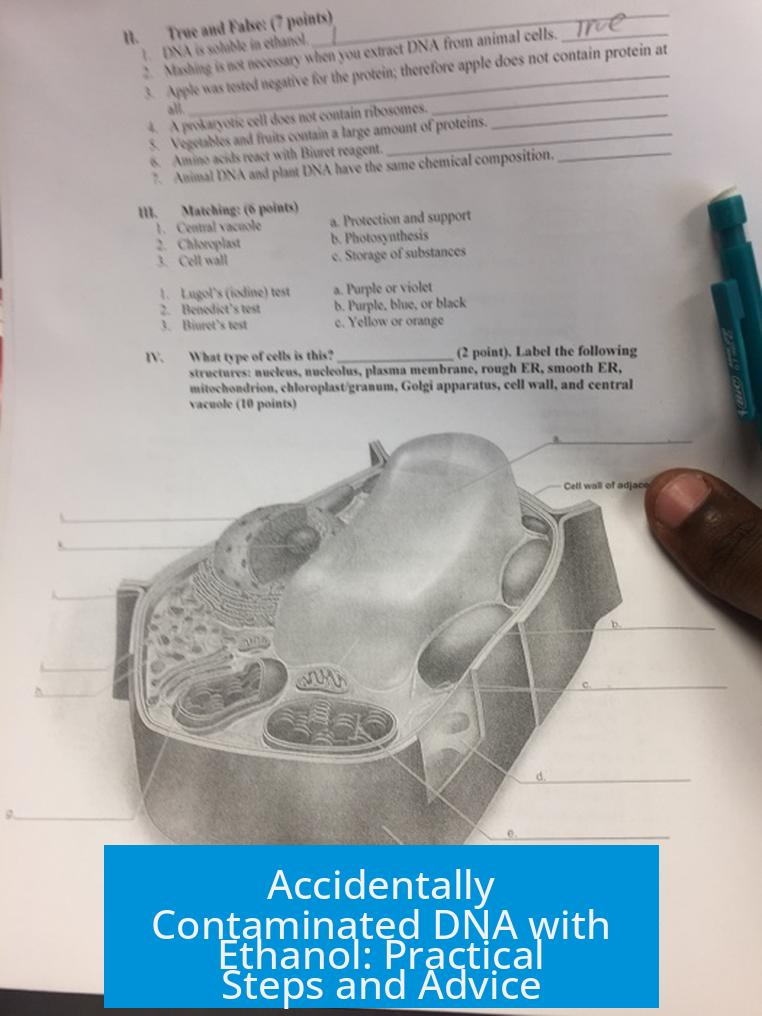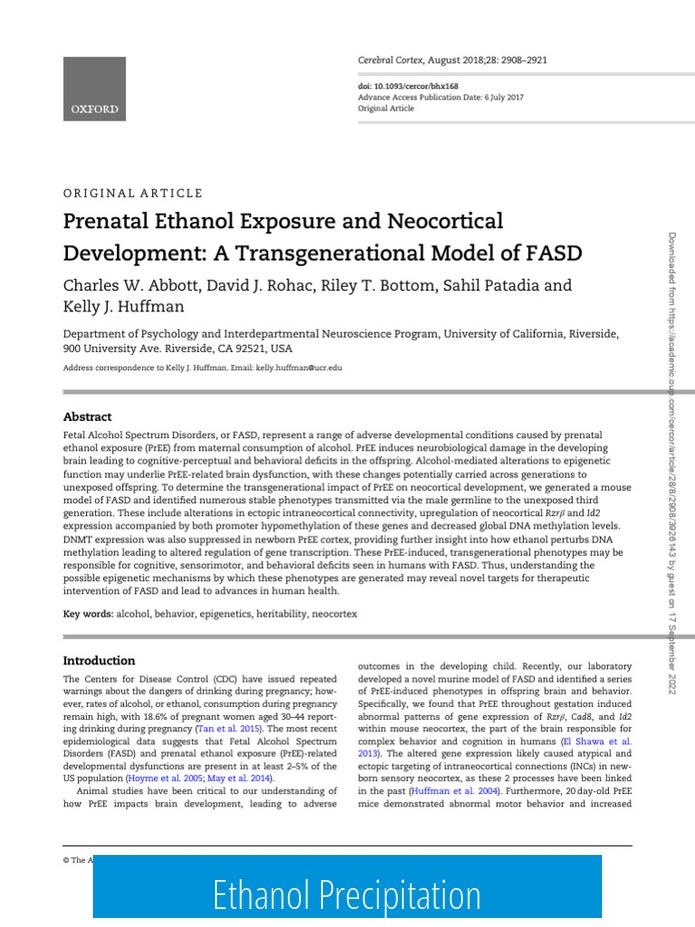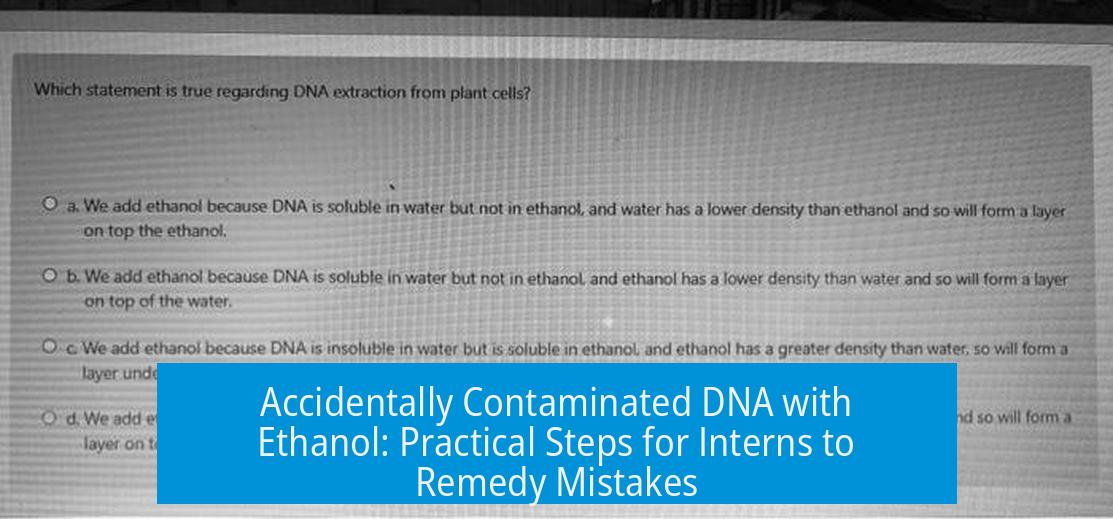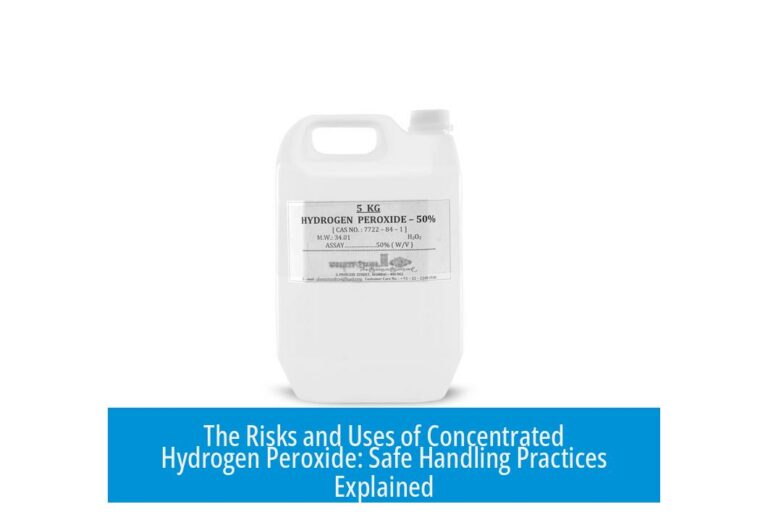Accidentally Contaminated DNA with Ethanol: Practical Steps and Advice

Accidental contamination of DNA samples with ethanol can compromise downstream applications, but there are ways to salvage or manage the situation depending on how the ethanol got into the sample. This article outlines the best course of action for interns or researchers facing this issue.
Understanding How Ethanol Contamination Occurred
First, clarify whether the DNA was eluted in a solution containing ethanol or if ethanol accidentally entered the tube after elution. For example:
- If the elution buffer itself had ethanol, the integrity of the DNA is likely affected, and restarting from PCR may be necessary.
- If the DNA sample was exposed to ethanol post-elution (e.g., accidental addition), gentle ethanol removal can restore the sample.
Communicating the exact details to a supervisor or lab manager is critical for receiving tailored advice.
Immediate Actions to Remedy Ethanol Contamination
Ethanol Precipitation

Ethanol precipitation is a common method to purify and concentrate DNA. Since some ethanol contamination already occurred, performing a full ethanol precipitation can help:
- Add 0.1 volume of 3M sodium acetate (NaOAc) at pH 5.2 to the DNA sample.
- Add 2 volumes of 100% ethanol.
- Incubate on ice for 30 minutes.
- Centrifuge at 18,000 × g for 20 minutes at 4°C.
- Remove the supernatant carefully.
- Wash the pellet with cold 70% ethanol and spin again.
- Air dry the pellet to remove residual ethanol.
- Resuspend DNA in an appropriate buffer such as TE, Tris, or nuclease-free water.
This protocol ensures removal of ethanol and salts, restoring DNA quality for further use.
Evaporation of Residual Ethanol
If ethanol contamination is minimal, allowing it to evaporate may suffice. Recommended steps include:
- Opening the tube and incubating it at 50–60°C to promote evaporation.
- Reducing the volume to 10–20 μL and then adding water or buffer to resuspend.
This approach is quick and can regain usable DNA concentration without precipitation.
Emotional Support and Lab Etiquette for Interns
Laboratory errors are common, especially for interns or beginners. Engaging supervisors openly helps resolve issues effectively. Guidance usually involves either rescuing the sample or recommending a repeat of the experiment.
Here are tips for handling such situations professionally:
- Admit the mistake promptly and clearly explain what occurred.
- Ask for advice on whether to salvage the DNA or redo the PCR.
- View mistakes as learning opportunities rather than failures.
When to Restart the Experiment
If ethanol contaminated the elution buffer or was present during DNA purification, the safest approach is to restart the PCR and extraction process. Contaminated eluates typically yield poor results.
Key Takeaways
- Assess contamination origin: determine if ethanol was in the elution buffer or added afterward.
- Perform ethanol precipitation: salt and ethanol addition followed by centrifugation purifies DNA.
- Evaporate residual ethanol: gentle heating removes small amounts effectively.
- Communicate openly: supervisors can guide suitable next steps.
- Consider restarting: if elution mix contained ethanol, repeating PCR is advisable.





Leave a Comment